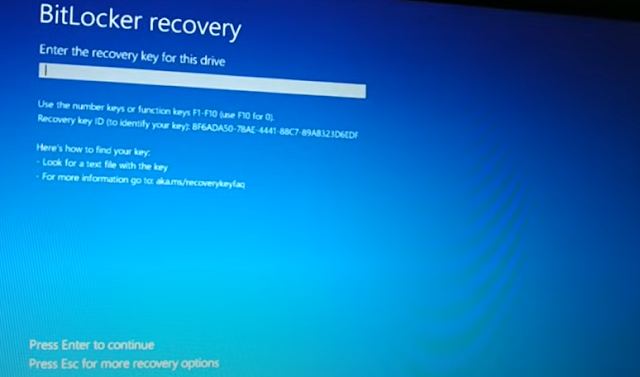Forgot bit locker pin, forgot bit locker recovery key, 5 Easy ways to fix


Blue screen errors, often called Blue Screen of Death (BSOD) errors, can be caused by hardware or software issues. Here are some steps to help you troubleshoot and fix BSOD errors:
### 1. **Note the Error Code**
When the BSOD appears, note the error code displayed. This can provide a clue about the cause of the problem.
### 2. **Restart Your Computer**
Sometimes, a simple restart can resolve the issue. However, if the BSOD happens repeatedly, further investigation is needed.
### 3. **Check for Hardware Issues**
- **RAM**: Faulty RAM can cause BSODs. Use a tool like Windows Memory Diagnostic to check for memory problems.
- **Hard Drive**: Check your hard drive for errors using tools like CHKDSK.
- **Overheating**: Ensure your computer isn't overheating. Clean out dust and ensure fans are working.
### 4. **Update Drivers**
Outdated or corrupt drivers can cause BSODs. Ensure all your drivers, especially those for graphics, network, and motherboard, are up-to-date.
- **Device Manager**: Use Device Manager to update drivers.
- **Manufacturer's Website**: Download the latest drivers from your hardware manufacturer's website.
### 5. **Check for Software Issues**
- **Recent Installations**: Uninstall any recently installed software that might be causing conflicts.
- **Windows Updates**: Ensure your operating system is up-to-date with the latest patches and updates.
### 6. **Run System Scans**
- **SFC (System File Checker)**: This tool scans and repairs corrupted system files.
```
sfc /scannow
```
- **DISM (Deployment Imaging Service and Management Tool)**: This tool can repair the system image.
```
DISM /Online /Cleanup-Image /RestoreHealth
```
### 7. **Use System Restore**
If the BSOD started occurring recently, use System Restore to revert your system to a previous state.
### 8. **Boot in Safe Mode**
Booting in Safe Mode can help determine if the problem is with third-party software or drivers.
- Restart your computer and press F8 before Windows starts.
- Select Safe Mode from the menu.
### 9. **Check Event Viewer**
Event Viewer logs system events and can provide more details about the cause of the BSOD.
- Open Event Viewer by typing `eventvwr` in the Run dialog (Win + R).
- Look for errors under Windows Logs > System.
### 10. **Use BlueScreenView**
BlueScreenView is a third-party tool that can help you analyze the minidump files created during a BSOD. This can provide more detailed information about the cause of the crash.
### 11. **Reinstall Windows**
If all else fails, consider reinstalling Windows. This will eliminate any software-related issues.
### 12. **Seek Professional Help**
If you are unable to resolve the issue, it may be time to seek help from a professional technician.